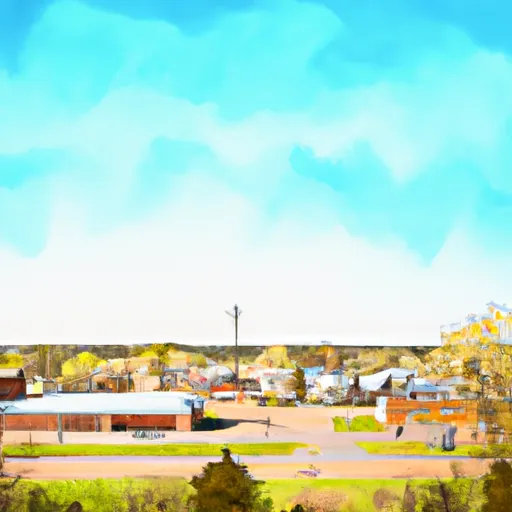-
 Snoflo Premium
Snoflo Premium
Get unlimited access to all our content
With no Ad interruptions! - Start Your Free Trial Login with existing account
Eldred
Eden Index
Climate
5.1
•
Recreation
0.6
•
Community
1.8
•
Safeguard
2.7/10

Eldred, Minnesota is a small town located in the northwestern part of the state. The climate in Eldred is classified as a humid continental climate, with long, cold winters and warm summers. The hydrology constituents of the area include the nearby Red River and numerous lakes and streams. Outdoor recreation opportunities in Eldred include fishing, hunting, hiking, and camping. The area is known for its excellent fishing, with a variety of fish species available, including walleye, northern pike, and catfish. Hunters can pursue game such as deer, bear, and waterfowl, while hikers can enjoy the beautiful scenery and wildlife of nearby state parks and forests. Camping is also popular, with many campgrounds and RV parks located in the area.
What is the Eden Index?
The Snoflo Eden Index serves as a comprehensive rating system for regions, evaluating their desirability through a holistic assessment of climate health, outdoor recreation opportunities, and natural disaster risk, acknowledging the profound impact of these factors on livability and well-being.
Climate Health Indicator (CHI): 5.1
Eldred receives approximately
553mm of rain per year,
with humidity levels near 83%
and air temperatures averaging around
5°C.
Eldred has a plant hardyness factor of
4, meaning
plants and agriculture in this region thrive during a short period during spring and early summer. Most
plants will die off during the colder winter months.
By considering the ideal temperature range, reliable water supplies, clean air, and stable seasonal rain or snowpacks, the Climate Health Indicator (CHI) underscores the significance of a healthy climate as the foundation for quality living.
A healthy climate is paramount for ensuring a high quality of life and livability in a region, fostering both physical well-being and environmental harmony. This can be characterized by ideal temperatures, reliable access to water supplies, clean air, and consistent seasonal rain or snowpacks.
Weather Forecast
Streamflow Conditions
Lower Red
Area Rivers
Lower Red
Snowpack Depths
Lower Red
Reservoir Storage Capacity
Lower Red
Groundwater Levels
Recreational Opportunity Index (ROI): 0.6
The Recreational Opportunity Index (ROI) recognizes the value of outdoor recreational options, such as parks, hiking trails, camping sites, and fishing spots, while acknowledging that climate plays a pivotal role in ensuring the comfort and consistency of these experiences.
Access to outdoor recreational opportunities, encompassing activities such as parks, hiking, camping, and fishing, is crucial for overall well-being, and the climate plays a pivotal role in enabling and enhancing these experiences, ensuring that individuals can engage in nature-based activities comfortably and consistently.
Camping Areas
| Campground | Campsites | Reservations | Toilets | Showers | Elevation |
|---|---|---|---|---|---|
| Alvarado City Park | None | 810 ft | |||
| Lake Bronson State Park | 200 | 979 ft | |||
| Welles Memorial Park | 5 | 953 ft | |||
| Lions Club Park - Stephen | None | 831 ft | |||
| Gilbert Olson Park | 36 | 810 ft | |||
| Kidder Rec Area | 8 | 956 ft | |||
| Island Park - Argyle | 22 | 844 ft | |||
| Marshall County Park at Florian | 104 | 930 ft | |||
| Lancaster Park | 28 | 914 ft | |||
| Chahinkapa Park | 6 | 956 ft |
Catastrophe Safeguard Index (CSI):
The Catastrophe Safeguard Index (CSI) recognizes that natural disaster risk, encompassing floods, fires, hurricanes, and tornadoes, can drastically affect safety and the overall appeal of an area.
The level of natural disaster risk in a region significantly affects safety and the overall livability, with climate change amplifying these risks by potentially increasing the frequency and intensity of events like floods, fires, hurricanes, and tornadoes, thereby posing substantial challenges to community resilience and well-being.
Community Resilience Indicator (CRI): 1.8
The Community Resilience Indicator (CRI) recognizes that education, healthcare, and socioeconomics are crucial to the well-being of a region. The CRI acknowledges the profound impact of these elements on residents' overall quality of life. By evaluating educational resources, healthcare accessibility, and economic inclusivity, the index captures the essential aspects that contribute to a thriving community, fostering resident satisfaction, equity, and social cohesion.

